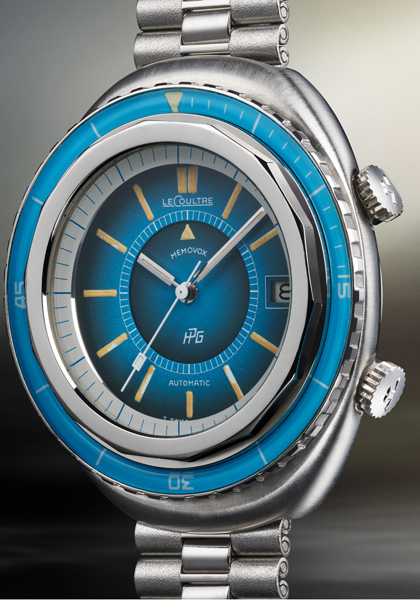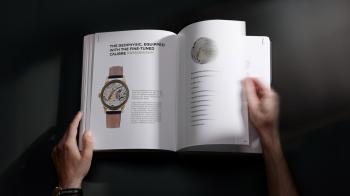Known as La Grande Maison by those familiar with the tradition of fine watchmaking in the Vallée de Joux, Jaeger-LeCoultre was founded in 1833 by Antoine LeCoultre, gaining the other half of its hyphenate name in 1937 when it formally merged with a longtime collaborator, the Parisian watchmaking company founded by Edmond Jaeger. In its earlier years, Jaeger-LeCoultre was primarily renowned for its movements, supplying some of the most prestigious watch companies in the world, before it began creating watches under its own brand. This “Movements First” chapter of Jaeger-LeCoultre’s history is the foundation of its modern-day reputation for watches of the finest mechanical quality, reliability and value. And it is on this foundation that Jaeger-LeCoultre has recently revisited its archives, selecting watches of particular significance to represent key moments of horological advancement within the company.
The Collectibles is a lushly illustrated coffee-table book of nearly 560 pages featuring 17 timepieces made between 1925 and 1974, from the Duoplan to the Memovox Snowdrop. The first 10 pages of the book consist of an introduction by Jaeger-LeCoultre CEO Catherine Rénier and foreword by Dr Franco Cologni (co-founder of the Michelangelo Foundation and former top executive in the Richemont Group). Subsequently, the aforementioned 17 watches are featured in chronological order. If 550 pages for 17 watches seems a little on the excessive side, rest assured that The Collectibles is by no means an exercise in literary self-aggrandisement.

Each of the 17 watches has its own dedicated chapter, but calling them chapters is almost a disservice to the contents thereof — The Collectibles might be more accurately described as a single-volume compendium of in-depth monographs on each watch. These form the most comprehensive and, dare I say, definitive accounts of these watches in existence, providing an invaluable resource for hardcore watch aficionados and casual enthusiasts alike.
Chapters begin with an introduction to the featured watch, giving readers an overview of the horological narrative and historical context of the watch. In other words, the first thing you learn about each of the featured watches is why they were selected for this book and what makes them important to those who love fine mechanical watchmaking. Focused subsections then follow, laying out details of the movement, for example, or the origins of the watch name. Interspersed between these subsections are history and culture sidebars, giving more information about Art Nouveau (in the Duoplan chapter), the golden age of air travel (in the Memovox chapter) or the evolution of precision timing (in the Geomatic chapter), just to name a few.

An essential section, that will doubtlessly appeal to the large and flourishing community of vintage Jaeger-LeCoultre collectors, is the illustrated list of variations for each featured watch. For collectors of vintage watches, used to hours of online research and trawling online forums to verify their acquisitions, The Collectibles represents a new standard of reliable information on archival timepieces, coming from an irrefutable source — the brand itself.
Of course, after digesting the full contents of the book, some may feel inspired to purchase one of the featured watches for themselves. Jaeger-LeCoultre therefore put together a selection of authenticated vintage pieces drawn from the 17 models featured in The Collectibles, meticulously restored and available via their online boutique. Unsurprisingly, these sold out rapidly, but La Grande Maison plans to maintain The Collectibles as a retail concept that extends beyond the book, continuing to replenish the vintage models for sale via their site. A tantalising proposition indeed!






